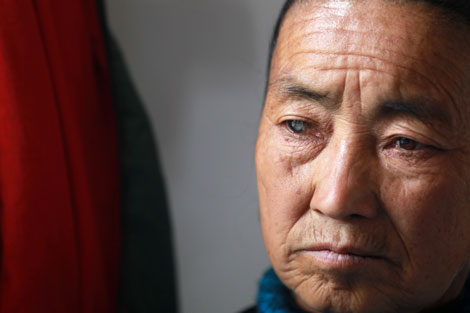White paper on rural poverty reduction
Updated: 2011-11-16 10:50
(Xinhua)
|
|||||||||
BEIJING - The Chinese government on Wednesday unveiled a white paper on its poverty reduction efforts in the past decade, highlighting achievements and challenge for China to bring common prosperity to its more than 1.3 billion people.
The white paper, titled New Progress in Development-oriented Poverty Reduction Program for Rural China, was released by the State Council Information Office.
The white paper introduces China's policies, achievements, special programs, social involvement and international cooperation in the fight against poverty.
It was the Chinese government's second white paper on poverty reduction after it issued the first edition of such document in 2001.
The white paper says the mission to reduce poverty is particularly difficult in China given the size of the poor population in its rural areas.
According to the white paper, China's poverty-stricken rural population fell from 94.22 million at the end of 2000 to 26.88 million at the end of 2010, an equivalent to lifting the entire population of France out of poverty in the past decade.
The proportion of poor people in the country's rural population decreased from 10.2 percent in 2000 to 2.8 percent in 2010.
The Chinese government defines those who earn less than 1,274 yuan (about $200) in income a year as "poor people" after the nation raised the national poverty line for rural residents from 865 yuan in 2000 to 1,274 yuan in 2010.
China has basically solved the problem of providing adequate subsistence, food and clothing for its rural residents, the 36-page white paper declares.
"The Chinese government has always made poverty reduction an important goal and task of national development...and worked hard to enable all the people to enjoy the fruits of economic and social development," the white paper says.
It was in the mid-1980s that the Chinese government started the development-oriented poverty reduction program in the rural areas in an organized and planned way.
China's development-oriented poverty reduction program in the rural areas has promoted social harmony and stability, fairness and justice, and contributed to the development and progress of the country's human rights.
As poverty reduction is a common cause of the entire human society, China's development-oriented poverty reduction program is an important component of the world's poverty reduction efforts, says the white paper.
The white paper stresses China has realized, ahead of schedule, the goal of cutting the poverty-stricken population by half, as listed in the United Nations Millennium Development Goals, thus making great contributions to the world's poverty reduction efforts.











